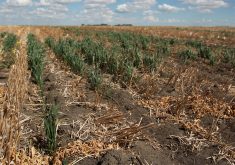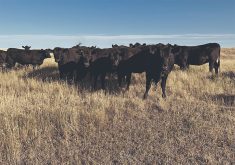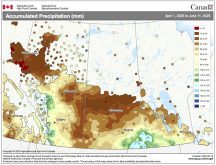Soybeans have faced a sobering slap down in Western Canada.
From being lauded as the next Cinderella crop and projected by some to assume a core role in most farmers’ rotations, the crop has experienced a big slump.
Rather than hitting three million acres in Manitoba, which many expected by now, the crop’s acreage has fallen to about 1.3 million acres, or one million fewer than in 2017.
A host of issues have hit growers: repeated years of drought; low protein leading to discounts; troubles marketing the crop; high seed costs crushing margins.
Read Also

More work wanted on removing red tape
REGINA — Canadian farmers risk falling further behind competitors if two main federal agencies don’t become more efficient and responsive…
However, the industry still believes better times lie ahead for the crop.
“Soybeans have a reasonably bright future but our eyes are open as to the challenges,” said Daryl Domitruk, executive director of Manitoba Pulse and Soybean Growers Association, after a day-long conference with Canada’s soybean associations.
The drought years have led to weak yields and poor returns. Soybeans do well in wet soils and love moisture. If average precipitation returns, soybean yields should rebound, Domitruk said.
Developing varieties that can handle Manitoba’s short growing season have now proven themselves.
“The maturity question has been answered,” said Domitruk.
The big challenge now is yield stability for drought, pests, disease and other challenges. If drought took less of a chunk out of soybean yields, its relative returns wouldn’t look so bad in challenging times.
This year soybeans are projecting to be the worst-returning crop among the major crops in Manitoba, according to a Manitoba Agriculture analysis. That’s a combination of expected weak yields and high seed prices, despite low input costs.
Seed prices are far more significant in soybeans than in other major crops. That’s not a problem Domitruk thinks can be fixed much on the cost side. In the United States, there are public research programs that supply varieties to some specific areas that face particular agronomic challenges, but Canada doesn’t have those sorts of programs.
However, seed developers are telling the industry that new varieties should improve results for producers.
“There are all kinds of crop improvements and breeding programs underway that are really loading the pipeline with new improved varieties,” said Domitruk.
“We may not conquer the seed cost issue, but at least we’ll remove the risk a bit.”
If the crop’s yields and returns can be improved, the industry believes acreage in Manitoba could rebound by 500,000 to one million acres, getting it back to about where it was before the recent multi-year slide.
Building acreage might be tougher in Saskatchewan and Alberta, where most places have shorter growing seasons, less heat and less moisture.
However, the crop is a strategic fit for many eastern Prairie farmers, Domitruk said. Many parts of Saskatchewan and Alberta can grow several crops other than wheat and canola, but that’s less easy in Manitoba. Getting soybeans into the acreage supplies nitrogen, reduces carbon and nitrous oxide emissions, and improves crop rotation.
“Farmers need an alternative, a bona fide alternative, that’s broadly available across the province to accompany wheat and canola,” said Domitruk.
The soybean industry is hoping that the recent downtrend in acres, which partly reversed last year, is about to end and the crop can return to a more significant, long-term acreage. Few today are talking about hitting three million acres in Manitoba, but many hope it recovers some of the lustre it lost in the drought.


















